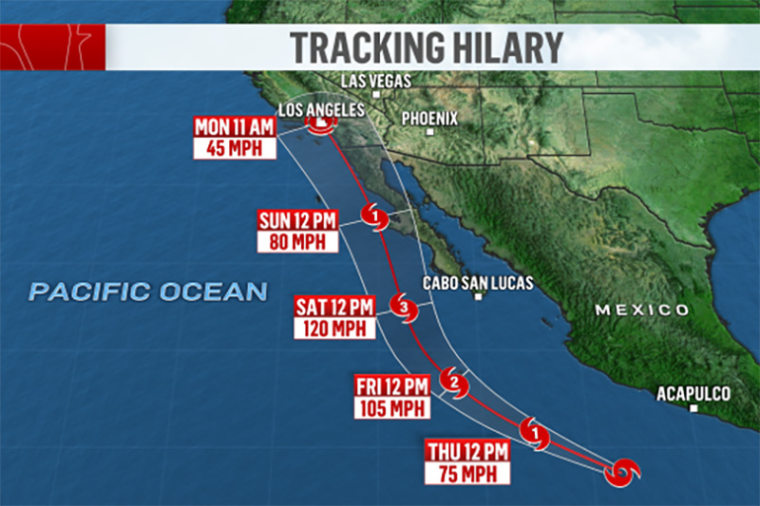Bracing For The Storm: Understanding And Surviving Severe Weather
6 min read
Bracing for the Storm: Understanding and Surviving Severe Weather
Batten down the hatches, folks! Mother Nature can be quite unpredictable at times, unleashing her fury in the form of severe weather. From raging thunderstorms to menacing hurricanes, it’s crucial that we understand these powerful forces of nature and know how to stay safe when they strike. So grab your raincoat and join us as we dive into the world of severe weather – an adventure that will equip you with all the knowledge you need to weather any storm!
What is Severe Weather?
Preparing for Severe Weather
Preparing for Severe Weather
When it comes to severe weather, preparation is key. By taking proactive steps to protect yourself and your loved ones, you can mitigate the potential damage and ensure everyone’s safety. Here are some important tips to help you prepare:
1. Stay informed: Keep a close eye on weather forecasts and alerts issued by local authorities. This will give you valuable information about the severity of the upcoming storm or other severe weather conditions.
2. Create an emergency kit: Assemble a well-stocked emergency kit that includes essential supplies such as non-perishable food items, water, flashlights, batteries, first aid supplies, blankets, and a portable radio.
3. Secure your home: Take measures to reinforce your home against high winds or flooding. Trim trees near your property that could potentially fall during a storm, secure loose outdoor objects like patio furniture or trash cans, and consider installing storm shutters or reinforcing windows.
4. Develop an evacuation plan: Familiarize yourself with evacuation routes in your area and have a plan in place for where you will go if you need to evacuate. Make sure all family members know the plan and have designated meeting points.
5. Communicate with neighbors: Establishing good communication with neighbors can be invaluable during severe weather events. Exchange contact information so that you can check on each other’s well-being and offer assistance if needed.
Remember, being prepared ahead of time gives you peace of mind when facing severe weather situations.
What to Do if You are Affected by Severe Weather
When severe weather strikes, it can be a chaotic and frightening experience. Whether it’s a powerful storm, a tornado, or a hurricane, knowing what to do if you are affected by severe weather can make all the difference in ensuring your safety. Here are some important steps to take:
1. Stay informed: Keep an eye on local news updates and listen to emergency alerts for any instructions or warnings related to the severe weather event.
2. Seek shelter: If you’re indoors, head to the lowest level of your home away from windows and exterior walls. In case of a tornado warning, find shelter in a small, windowless interior room like a bathroom or closet.
3. Stock up on supplies: Make sure you have enough food, water, medications, flashlights with extra batteries, and other essentials to last for at least 72 hours in case of power outages or limited access to resources.
4. Have an emergency plan: Create a family emergency plan that includes designated meeting spots outside your home and contact information for family members and friends who can assist during emergencies.
5. Be cautious after the storm passes: Avoid downed power lines or flooded areas as they may pose hazards even after the immediate danger has passed.
Remember that every severe weather situation is unique; therefore adapt these suggestions based on specific circumstances and follow any instructions given by local authorities.
Conclusion
Conclusion
Severe weather can be a force to be reckoned with, but by understanding its nature and taking necessary precautions, you can increase your chances of surviving and minimizing damage. From thunderstorms and hurricanes to tornadoes and blizzards, each type of severe weather requires unique preparations.
By staying informed about the weather conditions in your area, creating an emergency plan for yourself and your family, and having essential supplies readily available, you can better brace yourself for the storm. Remember to secure outdoor items that could become projectiles during strong winds.
If severe weather does strike your area, it’s important to stay calm and seek shelter immediately. Follow instructions from local authorities and monitor updates through radio or trusted sources of information. After the storm passes, take caution when assessing any potential damages or hazards.
It is crucial to prioritize safety above all else during severe weather events. By being well-prepared and knowledgeable about how to handle these situations, you can significantly reduce risks to yourself and those around you.
Remember: severe weather may bring uncertainty into our lives, but with proper preparation—and a bit of resilience—we can face these storms head-on.
What is Severe Weather?
Severe weather refers to any extreme atmospheric conditions that can cause significant damage, disruption, and danger to our lives and property. It’s like nature throwing a tantrum on steroids! We’re talking about intense thunderstorms with booming thunderclaps and dazzling lightning displays; tornadoes swirling like dervishes, leaving destruction in their wake; hurricanes churning up colossal waves and torrential rains; blizzards blanketing everything in sight with layers of snow; and let’s not forget the scorching heatwaves that transform the outdoors into an inferno.
These weather events are no ordinary rain showers or gentle breezes – they pack a punch! They can unleash powerful winds, devastating floods, hailstones the size of golf balls, or even deadly ice storms. The intensity of severe weather can vary depending on geographical location and time of year. What may be considered severe in one place might be par for the course elsewhere.
Understanding what constitutes severe weather is crucial because it allows us to take appropriate precautions when necessary. By knowing what we’re up against, we can better prepare ourselves mentally and physically for whatever Mother Nature decides to throw our way. So buckle up folks because there’s more to learn about surviving these tempestuous encounters!
Types of Severe Weather
When it comes to severe weather, there is a wide range of conditions that can arise. Each type of severe weather presents its own unique challenges and potential dangers. Here are some examples of the most common types of severe weather:
1. Thunderstorms: These powerful storms bring heavy rain, lightning, strong winds, and sometimes even hail or tornadoes. Thunderstorms can quickly turn dangerous with high winds causing damage to buildings and falling trees.
2. Hurricanes: These large tropical cyclones form over warm ocean waters and can cause widespread destruction with their fierce winds, heavy rainfall, storm surges, and flooding. The impact of a hurricane can be felt for hundreds of miles inland.
3. Tornadoes: These violent rotating columns of air are capable of causing immense devastation in just minutes. With wind speeds reaching up to 300 mph (480 km/h), tornadoes can level homes and buildings in their path.
4. Blizzards: These winter storms bring heavy snowfall accompanied by strong winds, creating whiteout conditions that make travel extremely hazardous or impossible.
5. Heatwaves: Prolonged periods of extreme heat pose serious health risks such as heat exhaustion or heatstroke. Heatwaves also increase the likelihood of wildfires due to dry vegetation.
6. Floods: Heavy rainfall or melting snow can lead to flash floods or river flooding which submerges streets and homes under water, causing significant property damage and endangering lives.
7.
Droughts: Droughts occur when an area experiences prolonged periods without sufficient rainfall, resulting in water shortages,lack of crops, and increased risk for wildfires
Remember that these are just a few examples; there are other types like blizzards, sandstorms, hailstorms, etc., each bringing its own set of challenges.






